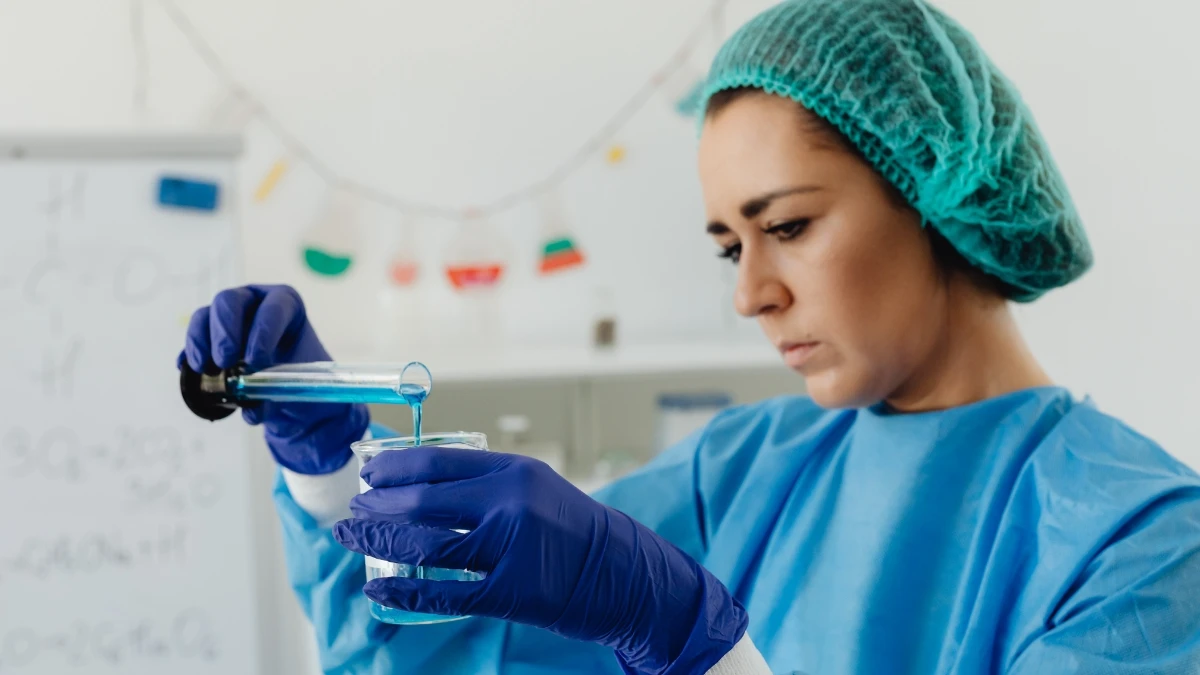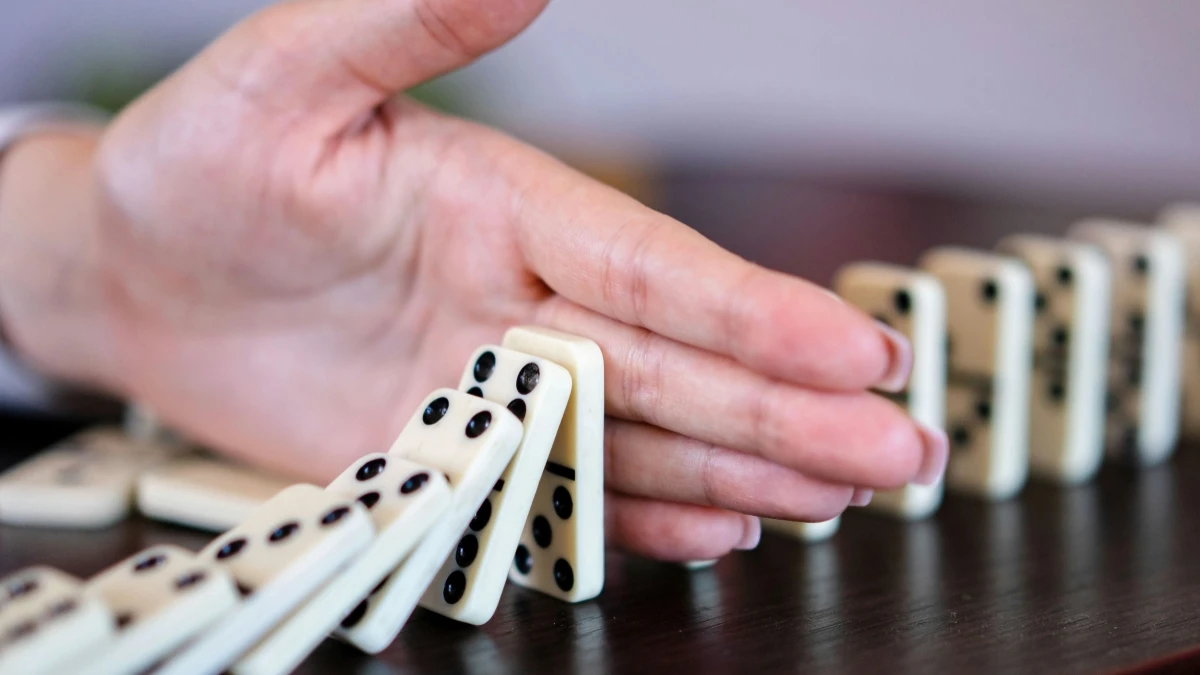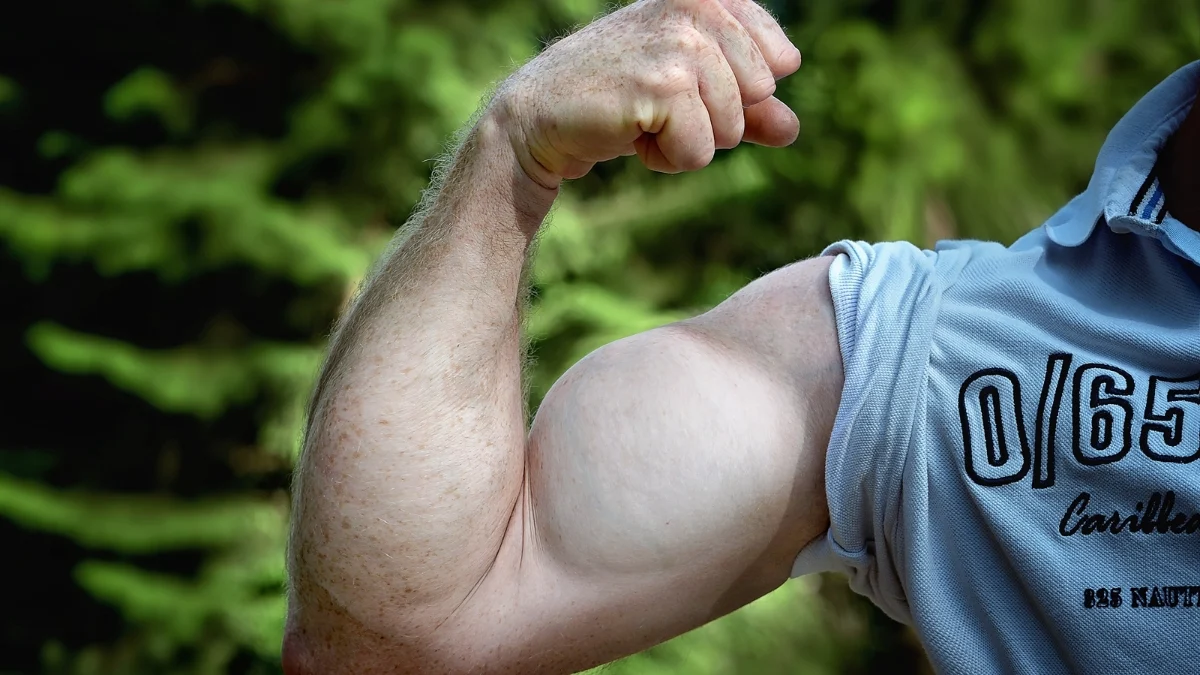Your daily workout is not enough. The long hours you spend sitting are quietly damaging your metabolism, no matter how hard you train. But a recent discovery offers a way to fight back right from your chair.
Deep in your calf lies the soleus muscle, a small but mighty metabolic engine. A specific, simple movement can switch it on, forcing it to burn blood sugar and fat for hours without getting tired.
This is not about exercising more; it’s about activating what you already have to fundamentally change your body’s chemistry and take control of your health.
The Soleus Muscle: A ‘Hidden’ Key to Metabolic Health

Recent research identifies the soleus muscle in the calf as a powerful, yet overlooked, engine for metabolic control. Accounting for only 1% of body weight, its unique physiology allows it to work for hours without fatigue.
Unlike other muscles, it’s composed mainly of slow-oxidative fibers that draw energy directly from circulating blood glucose and fats, rather than depleting stored glycogen. This continuous, low-intensity capability, naturally used for maintaining posture, gives it a unique ability to significantly impact blood sugar and fat metabolism.
A study from the University of Houston highlighted this potential using a “soleus pushup” (SPU), a simple, seated heel-raise movement. When participants performed this motion for extended periods, they saw dramatic metabolic improvements.
A 52% improvement in blood glucose stability and a 60% reduction in insulin requirements after a glucose drink.
Furthermore, the rate of fat metabolism doubled between meals, reducing levels of VLDL (bad cholesterol).
The Hidden Metabolic Engine

Why Your Daily Workout Isn’t Enough
The Hidden Risk of “Active Sitting”
Sitting 8+ hours a day is linked to a
increased risk of Type 2 Diabetes, even if you exercise.
Muscles Shut Down
Electrical activity in leg muscles stops almost immediately, halting key metabolic processes.
Metabolism Slumps
Calorie burning drops to $\approx 1$ per minute, and enzymes that break down fat fall by 90%.
Sugar Handling Fails
Insulin’s ability to clear sugar from the blood is significantly reduced after just one day of sitting.
The Solution: The 2-Minute Rule
- For every 30 minutes you sit, stand up and move.
- Walk, stretch, or march in place for just 2-3 minutes.
- This simple act “wakes up” your muscles and reactivates your metabolism.
You work out. You try to eat right. So why do problems like type 2 diabetes and obesity keep getting worse for so many people? The issue isn’t your workout. It’s the 10 or 12 hours you spend sitting at a desk, in a car, or on the couch.
For a long time, we thought a good workout could cancel out a day of sitting. But new research shows this isn’t true. A scientist named Dr. Marc Hamilton proved that sitting too much is a separate problem from exercising too little.
Your one-hour gym session, no matter how hard you go, can’t fix the damage from the other 15 hours you’re awake.
When you sit for a long time, your body’s metabolism slows way down. Your muscles are the main place you burn sugar and fat from your meals. But when you’re inactive, these huge, important muscles basically go to sleep.
They stop responding well to insulin and don’t handle fat properly. This is a big reason why metabolic problems start.
The real problem isn’t just about burning fewer calories. It’s that the communication system in your body shuts down. When your muscles are quiet, they stop sending the signals that control blood sugar and burn fat.
So even with a daily workout, your body spends most of the day in a state that can lead to disease. We need a new way to keep the body’s engine running, even when we have to sit.
Meet the Soleus: Your Body’s Secret Workhorse
Your Calf’s Hidden Metabolic Engine
The “Sprinter” (Gastrocnemius)
The visible calf muscle. Made of fast-twitch fibers, it’s built for power (jumping, running) but fatigues quickly.
The “Marathoner” (Soleus)
The deep, hidden muscle. Made of slow-twitch fibers, it’s built for hours of endurance and is a key metabolic regulator.
Composition
90%
Slow-twitch fibers, packed with mitochondria for endurance.Primary Fuel
Fuel
Burns blood glucose & fat, unlike other muscles that use glycogen.The Problem
Idle
Goes dormant from sitting; one of the first muscles to atrophy.How to Activate It: The “Soleus Pushup”
Sit with feet flat on the floor and your muscles relaxed, with your knees bent at roughly 90 degrees.
Keeping your toes on the floor, raise your heels as high as they can go, feeling the contraction in your deep calf.
Let your heels fall back to the floor. Repeat this motion. It’s an endurance, not a power, exercise.
Research shows this low-level activity can help regulate blood sugar for hours.
The fix might not be a new diet or pill. It could be a muscle you already have but probably don’t know about. It’s called the soleus muscle, and it’s deep in your calf, under the bigger, more visible calf muscle.
It’s not a power muscle for jumping or sprinting. Instead, it’s a quiet workhorse built for amazing endurance.
What makes this muscle so special? It’s almost entirely made of “slow-twitch” fibers. Think of it like a marathon runner, not a sprinter. It is packed with mitochondria, which are the tiny power plants in your cells.
The soleus is designed to burn fuel using oxygen, which is a very efficient process. This lets it work for hours and hours without getting tired.
But here’s the strange part. This muscle is built for constant, low-level work, but it’s one of the first to get weak when we sit all day. Studies on people on bed rest show the soleus shrinks more than other leg muscles. Our modern, chair-filled lives have basically turned off this key muscle.
This is what makes the soleus so important. Because it’s so good at endurance but so hurt by inactivity, waking it up could have huge effects. New science shows that if we can turn this specific muscle back on, we might be able to reverse the metabolic damage caused by sitting.
The Scientific Discovery

Your Muscles Do More Than Just Move
To get why this one small muscle matters so much, you need to know something new about muscles in general. They aren’t just for moving your body. They are a command center for your metabolism. In fact, your skeletal muscle is the largest endocrine organ in your body.
When your muscles work, they release hundreds of special proteins called myokines. These act like messengers that travel through your blood. They allow your muscles to “talk” to your liver, pancreas, fat tissue, bones, and even your brain.
These messengers do all sorts of important jobs. One of them, called IL-6, helps break down fat, tells the pancreas to release insulin. And can even turn regular white fat into more active, energy-burning brown fat. Other myokines can help your brain work better or keep your bones strong.
This changes how we think about exercise. The benefits don’t just come from the calories you burn. They come from this flood of healthy signals your muscles send out. When you’re inactive for too long.
This communication stops, and that’s a big reason metabolic diseases develop. This is why the soleus is a big deal. Even though it’s small, if you can keep it working, it can send out these healthy signals all day long.
How to Turn On the Soleus: The “Soleus Pushup”
Dr. Marc Hamilton and his team at the University of Houston wanted to find a way to switch this muscle on. They created a specific, simple movement called the “Soleus Pushup” (SPU).
You do it while sitting with your feet flat on the floor. You keep the front of your foot down and lift your heel as high as it can go. Then, you just let it drop back down. It looks easy, but it’s a very precise movement.
It’s the exact opposite of how you use that muscle when you walk. When you walk, your body tries to save energy. This move is designed to make the soleus use as much energy as possible for a long time.
The real magic is what it uses for fuel. Most exercises burn sugar (called glycogen) that’s stored in the muscle. That’s a big reason you get tired.
The soleus pushup doesn’t do that. Instead, it pulls sugar and fat right out of your bloodstream for energy. This creates a “sink” that constantly cleans these fuels from your blood.
Because it doesn’t rely on its own limited fuel stores, the soleus can keep working for hours without fatigue.
This makes the soleus pushup a whole new type of activity. It’s not like a regular workout. It’s more like a therapy you can use to fix your metabolism while you’re stuck in a chair.
The Evidence and The Impact

The Results: A Full Metabolic Reset
The results from the first study on the soleus pushup were stunning. In a group of people who sat a lot, doing this exercise for a few hours had a bigger and faster effect on their metabolism than exercise, weight loss, or intermittent fasting.
The effect on blood sugar was huge. After having a sugary drink, people doing the soleus pushup had 52% better blood sugar control. The big spikes and crashes were gone. Their bodies also needed 60% less insulin to do the job.
This shows it makes you much more sensitive to insulin. The soleus was so good at eating up sugar from the blood that the pancreas didn’t have to work nearly as hard.
The impact on fat was just as good. The soleus pushup doubled the rate of fat burning in the time between meals. It also lowered the levels of VLDL triglycerides, a type of bad fat in the blood linked to heart and liver disease.
This is important because when your muscles don’t handle fat well, it can lead to obesity and fatty liver disease.
These big effects happen because this small muscle can keep its metabolism running at a high rate for hours. Even though the soleus is only 1% of your body weight, it can boost its own energy use so much that it can double or triple the whole body’s rate of burning carbohydrates.
| Metric | What They Found |
| Blood Sugar Spike After a Meal | 52% smaller |
| Insulin Needed After a Meal | 60% less |
| Fat Burning Rate While Fasting | Doubled |
| Bad Fats in the Blood (VLDL) | Lowered |
| Main Fuel Source | Sugar and fats from the blood |
A New Tool to Fight Prediabetes and Heart Disease
This worked for healthy people, but what about those who already have metabolic problems? The answer seems to be yes.
One study looked at people with prediabetes, which is when your blood sugar is high but not yet at the level of type 2 diabetes. When they did the soleus pushup during a glucose test, their blood sugar spike was about 32% lower than when they just sat still. This shows a direct improvement for people at high risk.
And it worked even without fancy lab equipment to check if they were doing it right, meaning people can do this at home or work.
Another study looked at people with heart disease. After just one month of doing the soleus pushup, their total cholesterol was lower. After three months, the benefits were even bigger.
They had higher levels of HDL (“good”) cholesterol and lower levels of LDL (“bad”) cholesterol. It also lowered a marker of inflammation in their bodies, which is a key driver of heart problems.
These results are a big deal. They show the soleus pushup isn’t just a trick for healthy people. It’s a real tool that could be used as a simple, free therapy to help manage serious chronic diseases. A simple seated movement can improve blood sugar, cholesterol, and inflammation all at once.
| Who Was Studied | What Happened |
| People with Prediabetes | Blood sugar spike after a meal was ~32% lower |
| Heart Disease Patients (3 months) | Total Cholesterol was much lower |
| LDL (“Bad”) Cholesterol was much lower | |
| HDL (“Good”) Cholesterol was much higher | |
| Body-wide Inflammation was much lower |
What This Means for Your Health

A New Way to Think About Health: Activate, Don’t Annihilate
This discovery doesn’t mean you should stop your regular workouts. Running and lifting weights are still great for your heart and strength. Think of the soleus pushup as a new tool to use alongside them. The old way was to blast calories in a short, intense workout. The new idea is to keep your metabolism gently running all day long by activating this one muscle.
This gives you a way to fight the negative effects of sitting in real-time, right as they are happening.
But you have to do it right. Dr. Hamilton warns that just tapping your heel won’t work. It’s a specific movement. You need to consciously lift your heel as high as you can while keeping the ball of your foot on the floor. This lets the calf muscle shorten and properly activates the soleus.
This could change everything. Health guidelines could start to focus not just on weekly exercise minutes, but on breaking up long periods of sitting. It also offers a powerful tool for people who can’t do traditional exercise, like the elderly or those with mobility issues. Anyone can do it, anywhere, with no equipment needed.
The Power Already Inside You
We are still learning about the soleus muscle’s power. Future studies will look at its long-term effects and how it might help with other conditions. New technology could even help people learn to do the movement correctly with feedback from a wearable device.
This discovery shows that some of the best health solutions aren’t in a pill or a fancy gym. They are already inside our own bodies, waiting for us to use them.
Fighting the health problems caused by our modern world feels like a huge challenge. But the answer might not be to completely change our lives. It might be to reconnect with our own bodies in a small, simple way. The key could be as simple as waking up this forgotten muscle. You can turn hours of sitting from a health risk into a time of healing and repair.
Conclusion
The fight against the health problems caused by a sedentary life doesn’t require a complete overhaul of your daily routine. The soleus pushup offers a practical and powerful way to reclaim your metabolic health during the hours you have to sit.
This simple activation turns a small, forgotten muscle into an engine that actively cleans sugar and fat from your blood, providing benefits that rival traditional exercise and other therapies.
It’s not a replacement for your workout, but a crucial partner to it. This discovery puts control back in your hands, transforming damaging periods of inactivity into moments of restoration and proving the most profound health solutions are often the ones already within us.


